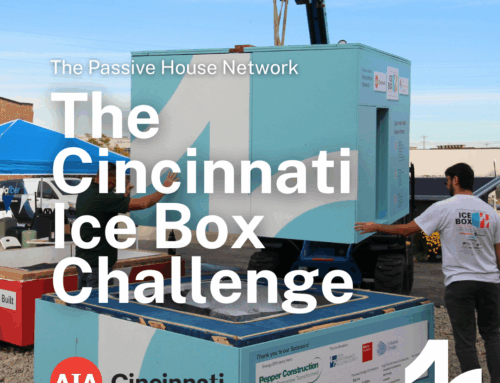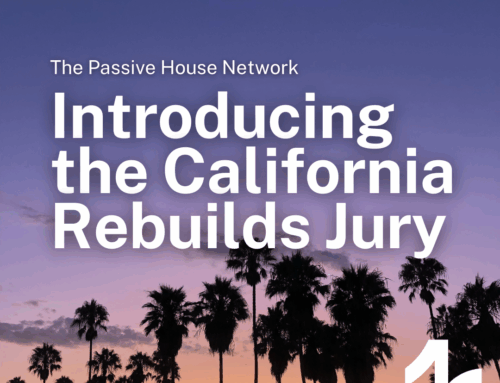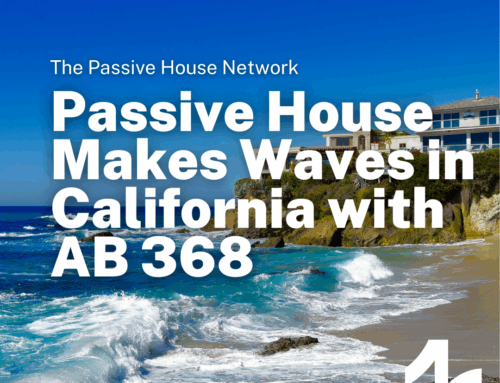Across the Network
With Jason Scheurer
Licensed contractor, Certified Passive House Tradesperson, and founder of BEST Techs Contracting, Jason Scheurer is also a board member of Passive House California. Based in Orange County, California, Jason is an active supporter of the Passive House standard, dedicating his career towards applying building science to everything he builds. Jason talked to us about his business, projects-in-progress, and his experience learning to be a CPHT with Emu Passive. See the video above, or read on for the interview.
This interview has been edited for length and clarity.
PHN: What made you interested in becoming a Contractor?
JS: I was working for my uncle back in the early 80s when I was in high school during the summertime. He was a project manager. I did a lot of miscellaneous pickup work and dug in trenches and anything that he couldn’t get anybody to do. And so I would go and do it. And then I started moving into working on the model homes. When certain things would go wrong I’d go over there and fix them, which was kind of a cool way to get introduced into the contracting field. I thought it was great.
I went to architectural school for about eight months through a trade school and learned how to draw blueprints and read and write them, which was a really big help. And then I got straight into the construction industry, learning how to frame homes from the ground up, and then working for a general contractor who basically remodeled homes from the ground up. So that’s kind of what got me interested in the contracting field itself. I’ve had several different contracting companies over the years, but we finally changed our name to BEST Techs Contracting. We specialize in the energy efficiency of building science and things like that. We’ve been in business since 2007, but I’ve been in the industry for over 40 years and been on my own for about 33 years now. So it’s been a long time out in the field, learning everything from the ground up, paperwork, trying to run the business and doing hands-on out in the field.
PHN: How did you first hear about Passive House? What made you want to become a CPHT?
JS: Well, I first heard about Passive House back in probably 2017 or 18, after I had done all kinds of other classes and learning building science through, like, the California Building Performance Association, which is now Efficiency First California. I took classes through them, a really strict 3 week training course, and then field testing, which got us certified through BPI. Most of the students in that class were general contractors, and we all said the same thing: we should have never got our license until we were taught building science. And now that we know how to build better and use building science to test and measure our outcomes of what we’re installing in people’s homes, it really makes a big difference. I also did my BPI training back in 2006 along with Building Green’s Greenpoint Rated Training. And then my company had the opportunity to build the first-of-its-kind all-green home in downtown Huntington Beach. And everybody was saying, well, you don’t want to introduce BPI into a new construction. So my next question to them was: you want me to build it to code first and then go back and fix it? And they go, yeah, that’s what you have to do. I said, well, I’m not gonna do that. So I learned as I was building this house to test and measure the things I was installing to make sure they were properly done before I moved on to the next phase of work or through the next inspection, which I think was really important.
I got introduced to Passive House a decade or two later. I’m like, wow, this is the next step. This is way better than, you know, existing homes. And so I went through the Certified House of House Designer Consultant class thinking it was the Trade class. What’s funny is a lot of the people that are on the Board of the Passive House California were in my same class. So it was kind of a no brainer for me to join Passive House California once I was completed with that. After I did my training through the Designer Class, I then went over to Emu Passive in Colorado for the Certified Passive House Tradesperson course. They’re pretty close to being the same except for the testing itself. The Trades test was a lot easier for me than the Designer test. All the contractors were in the class were really good. There were like four groups of us that were building the Passive House pods, but they also had a code-built pod to compare the differences between them for heat load calculations. So it was really cool. I enjoyed the class a lot.
PHN: How has becoming involved with your local Passive House Chapter, Passive House California, helped your career?
JS: I think I like to educate people. I used to be a national trainer for about seven years too. So I was flying around the country training people. So becoming part of that Passive House California Board was a no brainer for me. I think by helping me, I think it’s more like that I’ve been helping other people achieve what they want to achieve by being part of the Passive House community.
PHN: Can you tell us about a Passive House project that you’re working on?
JS: The most recent Passive House project I’m working on right now is in the construction phase. It’s the first of its kind Certified Passive House ADU, which stands for Accessory Dwelling Unit, which is becoming very popular now in California since the new laws came into effect. And I’m actually building it for an owner-builder which happens to be my cousin. I’m helping them do the envelope phase of it and then he’s coming in and doing all the finish work on the inside. We’ve finished plumbing and electrical right now. So hopefully in the next couple of weeks we’ll be totally completed with the project and we’ll be getting our blower door numbers very soon.
PHN: What would you say to prospective clients who are considering Passive House, but might need some more convincing?
Because I’m one of the very few Passive House Tradespeople in the Southern California area, we’re getting a lot of calls from homeowners that actually are thinking about Passive House because they’ve been learning about it, which is good. They’re mostly worried about, what does it cost to build? I think we need to move into the future and say, hey, I know these things cost a little bit more, but so did putting the outhouse inside of your home, so did putting the electricity into your home. That costs more money, but now everybody is used to it. Take a look at the wildfires we’re having. I think for people to understand that if you build towards Passive House standards, if your house is more airtight than today’s codes, then you’re gonna have less of a chance of your house burning down in a fire situation. If your house is airtight, then the outdoors is not trying to get inside that house, so it’s less likely to burn down. It makes a lot of sense. And I think the biggest thing about it is it uses very little energy. Up to 70% less energy than new construction today and up to 85% less energy than an existing home. Just by applying certain principles and techniques, you can achieve a very comfortable, durable home that uses less energy.
PHN: When it comes to our built environment, what do you want to see in the next 10, 20, or 50 years?
I would really like to see our California codes change to be more strict towards Passive House standards. We do know that New York’s already taken it on. I think Massachusetts has. The city of Denver in Colorado has taken it on. So a lot of these different states and cities are taking on Passive House as their standard build. And, you know, California is usually the leader in this and we’re still dragging our feet about what we want to do with it, trying to get the contractors on board and learn Passive House. It’s really not that difficult to do. And I think just hopping in the construction trade, it’s a lot to know, right? But if you just introduce Passive House, you’re already doing all this stuff anyways, you’re just doing it better. You’re checking with diagnostic tools and equipment to make sure that, hey, if I install this sheathing on this wall, is it airtight? Or how about if, before we actually put our exterior siding on the house, why don’t we hose down the walls and see if the windows are leaking, see if we see any water coming into the building. And just by doing those certain things you’re building towards Passive House standards. You’re meeting certain criteria that make sense. Why assemble a building and then cross your fingers to hope that it’s not going to leak? And yes, it does take a little bit more time, but your client is also now going to be happy. The fact is that you checked it before you closed it up. And they hopefully know that, hey, this house is future-proofed for 20, 50, 100 years now. I’m not gonna have the damage like my next door neighbor has due to moisture issues and penetrations coming into the home.
Many thanks to Jason for spending some time with us and answering our questions! If you’re ready to join him in advocating for better building standards, sure to register our next Certified Passive House Designer Cohort or check out the next Certified Passive House Tradesperson training with Emu Passive.




